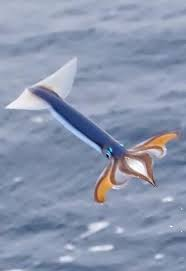Scientists have been working on models of planet formation since before we knew exoplanets existed. Originally guided by the properties of the planets in our Solar System, these models turned out to be remarkably good at also accounting for exoplanets without an equivalent in our Solar System, like super Earths and hot Neptunes. Add in the ability of planets to move around thanks to gravitational interactions, and the properties of exoplanets could usually be accounted for.
Today, a large international team of researchers is announcing the discovery of something our models can’t explain. It’s roughly Neptune’s size but four times more massive. Its density—well above that of iron—is compatible with either the entire planet being almost entirely solid or it having an ocean deep enough to drown entire planets. While the people who discovered it offer a couple of theories for its formation, neither is especially likely.
3.5 Earth radii, 73 Earth masses
What an absolute UNIT of a planet!
Space is fuckin cool
Imagine earth drowning in this planet’s ocean… Crazy!
Sounds like a gas giant that got its atmosphere ripped off from some nearby catastrophe. Like a massive gamma ray burst from a supermassive, or maybe a hungry neutron star just strolling thru the neighborhood. Or it could be the end results of a 2nd generation vampiric double star system that formed after a supernova, hence all the heavy metals. Perhaps coalescing back into a smaller star and a hot Jupiter/brown dwarf.
Would’ve been quite the sight, I’m sure.
The article talks about that. Such bodies have been discovered. They are significantly smaller than this planet.
Has anyone thought to contact Slartibartfast on Magrathea. Certainly someone, at some point a government has ordered a planet of solid gold and then the value engineering team suggested they could save quite a bit by just making it of pot metal and plating it. The manufacturer would have a record of who commissioned it and when.
It’s roughly Neptune’s size but four times more massive.
‽ Is it 4 times Neptune’s size or roughly the same size?
Massive in this context means the mass of the planet, not its radius. So it has the same radius (or volume, or takes up the same amount of space) as Neptune, but it has 4 times the mass (or 4 times the stuff inside of it).
4 times the mass (or 4 times the stuff inside of it)
Get Marie Kondo on the horn.
Wait, have we confirmed it doesn’t bring joy though?
They mean to say it’s roughly Neptune’s size but has 4 times the mass ( probably also beacause Neptune is a gas giant )
They talk about its high density right after so I think they mean its volume is roughly the same as Neptune’s but it has 4x as much mass.






